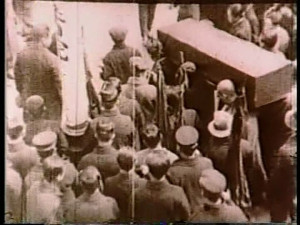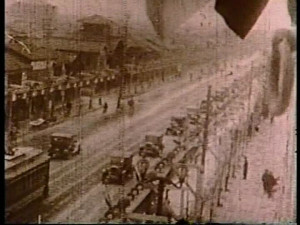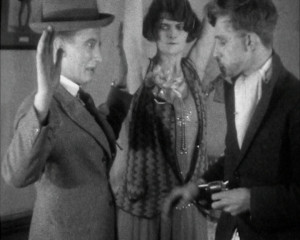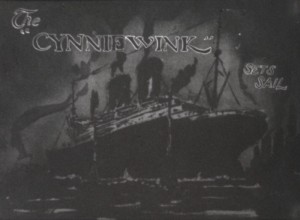
"Yamamoto Senji fought against the Peace Preservation Law in the Diet. On March 5, 1929 he was assassinated by the right wing. A farewell ceremony was held near the University of Tokyo. Prokino's Tokyo Branch shot the procession." Film shows the crowd marching through the streets of Tokyo.

"After his Tokyo farewell ceremony, Yamamoto's ashes were sent to Kyoto on March 9. Many friends and citizens gathered at his home in Uji. On the 15th a worker-farmer funeral was held at the Sanjo YMCA. Prokino's Kyoto Branch shot these five days of activities. The long line of cars is filled with taxis whose drivers deeply admired Yamamoto. The Watanabe in the title refers to the head of the Communist Part of Japan. Watanabe was returning to Japan from Taiwan when he was stopped by authorities. He committed suicide in their custody. Yamamoto and Watanabe were mourned together."

"A man entertains a married woman in her own home. He has previously stolen money from her husband’s wallet and hides the money in a book. The woman in turn removes the money from the book and keeps it for herself. The husband discovers their dalliance and orders the man to go. The man returns and accuses the couple of stealing his money. A burglar interrupts the proceedings. The burglar searches the pockets of the husband and removes (what looks like) another woman’s handkerchief. The burglar then searches the pockets of the man and the wife, discovering the money. The burglar offers the money to the husband in order to recompense him for embarrassing him in front of his wife and proceeds to steal other items from the room, leaving his revolver on the floor. The burglar says farewell. The husband and the man square up to each other" (EAFA Database).
"This film was specifically produced for a meeting of the London Amateur Cinematographers’ Association on 27 March 1929. The film was the basis of a competition for the club members. The club’s members in this case were invited to record the mistakes incorporated into the film. The report in Amateur Films notes that the competition was won by Mrs Nora Pfeil, who recorded approximately 30 mistakes" (EAFA Database).

“The hard-edged graphics of 'Skyscraper Symphony' stand in contrast to other New York 'scenics' produced during the 1920s. Composed of skewed perspectives, Robert Florey’s camera looks straight up the domineering concrete behemoths. And it is hard to determine if the film mimics symphonic form as the title suggests or whether it advances a new methodology in musical-visual shot progression that reflects the alien structures depicted.” —Bruce Posner via Light Cone

"A Race for Ties" tells the story of a sawmill owner, Joe Atwood, and his race against a large timber company, headed by U. Cheetem, to sign an exclusive contract for railway ties. In addition to a plot driven by one of the region’s staple industries (the lumber industry), the film highlights the scenic nature of the region" - Michel S Beaulieu, Women Film Pioneers Project.

Amateur film documenting the wedding of S. Winston Childs and Cynthia (Cheney) Childs. The film shows guests gathered in formal attire; eventually the bride and groom exchange vows, share the wedding cake, and depart from the ceremony.
Total Pages: 299